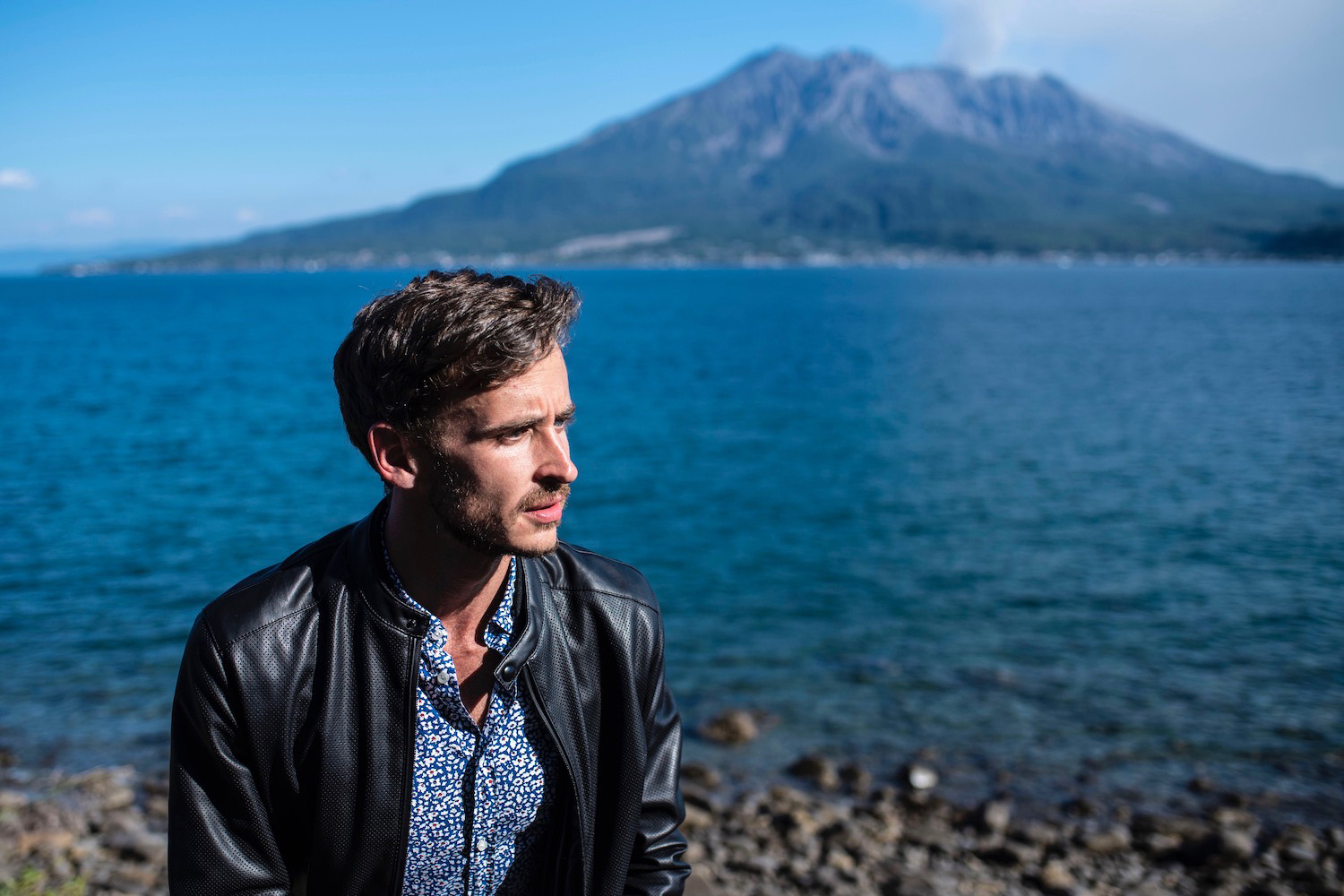One of the best things to do in Kagoshima is visit Sengan-en, a garden on the eastern edge of the city with nearly 700 years of history. That’s if you can get there.
Due to infrequent departures of the city’s two tourists buses (and an utter lack of information about local bus timetables online), I decided to make the three-kilometer walk from Kagoshima Station, a superfluous stop that is notably not the Kagoshima-Chuo Shinkansen terminal. Needless to say, Google Maps’ directions nearly led me off an actual cliff.
I did eventually make it to the garden, which is notable not only for having been the base of the Shimazu Clan (the representatives of Edo in the Satsuma Peninsula), but for taking advantage of the “borrowed scenery” of Sakurajima volcano just offshore. It was erupting when I arrived mid-morning.
A Particular Foreground
Volcanic eruptions, of course, are not typically cause for alarm in Japan. Certainly, I was more concerned about the impact of the dozens of field-tripping students sitting on the grass, and their imminent entry onto the garden’s grounds, which would almost certainly sully my selfies.

And I was mentally pre-occupied—borrowed scenery, now there’s a concept. Of course, it was easy to see in its literal manifestation, being that the mess of twisted pines and Samurai houses and koi ponds of Sengan-en would really not have seemed so impressive have it existed most anywhere else in Japan.
More broadly, I started to think about the idea of delusion, and the capacity of a certain backdrop to alter our perception of a particular foreground. I don’t know about you, but one of my favorite things to do in Kagoshima is to relate tourist attractions to my personal neuroses.
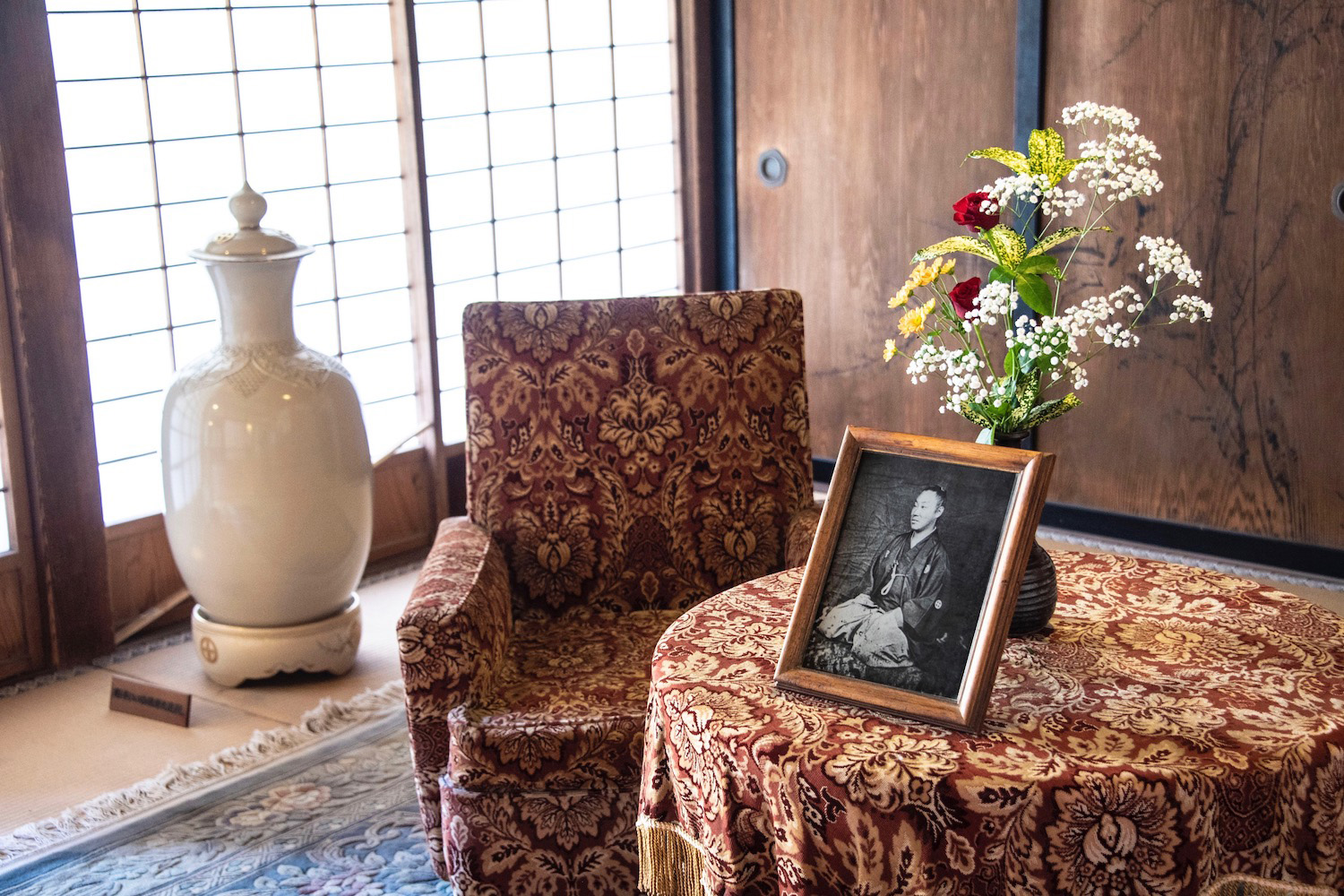
I’m of course referencing the quasi-ex who has featured in all but a couple of my Kyushu blog posts. My fever for him has since broken, as I mentioned in either the one about Udo Shrine or Takachiho Gorge, but I remain intrigued by what particular confluence of circumstances (what borrowed scenery, as it were) raised him onto the pedestal where he stood the entire time I chased him.
Forget the H
At any rate, Sengan-en was nice for a short while, but I quickly tired of the crowds and the crappy lighting due to the direction the sun was shining. (There also seemed to be one of the anti-tripod policies I’ve found dominates Kyoto during busy times of the year, and ain’t nobody got time for that.)
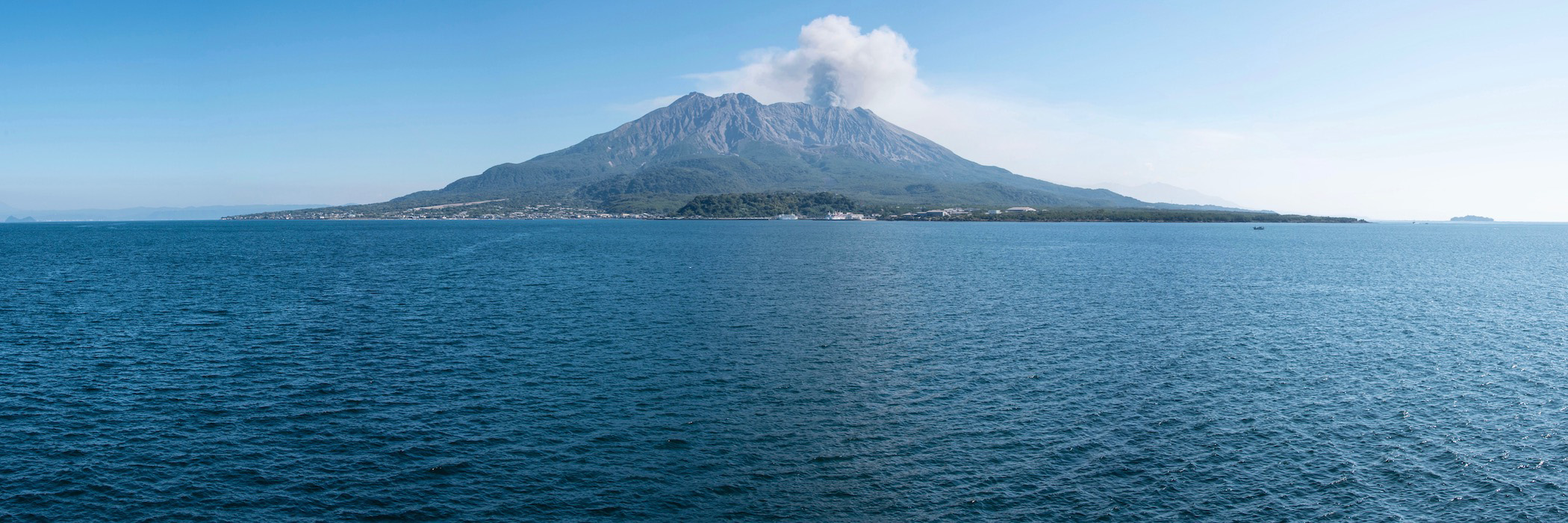
I managed to exit right around the time of the aforementioned tour bus’ arrival, and proceeded to tackle the second item on my list of things to do in Kagoshima: An excursion to Sakurajima itself, which sits just 15 minutes across the water from Kagoshima’s main ferry terminal. I’d had an opportunity to visit the island…er, peninsula during my first trip this far south in Japan almost six years ago, but decided against it at the last minute due to shitty weather.
Today was beautiful, but I’m almost 35. And I’m almost two weeks into my Kyushu trip—as nice as the view must’ve been from Yunohira Observatory, I didn’t want to devote five hours of my day to a round-trip hike there.
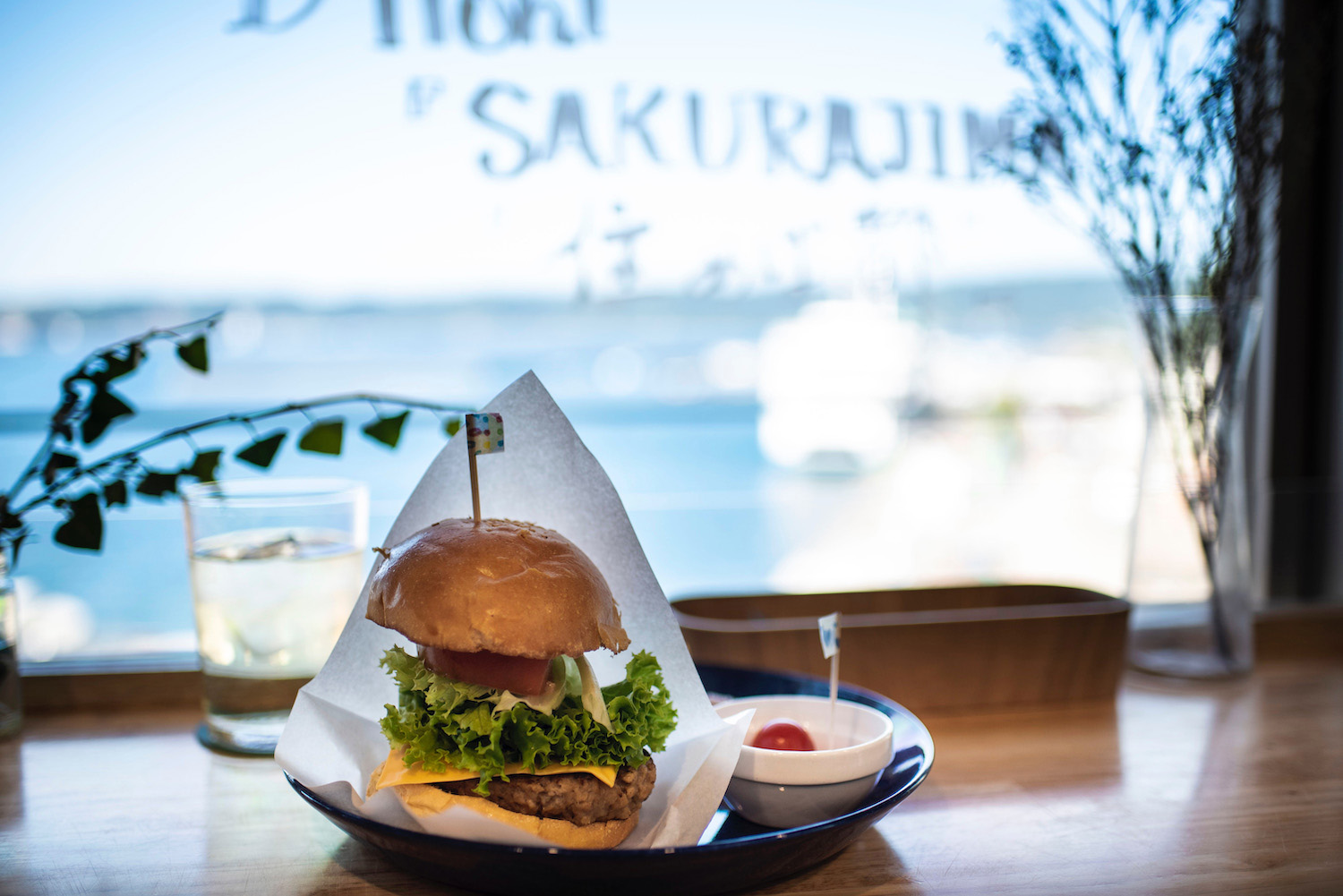
Rather, I sat down for lunch with a view at the simple Minato Cafe, which is actually right inside the ferry terminal building. After scarfing down an ordinary hamburger made extraordinary by the fact that the woman who took my order took my “no mayonnaise” request seriously, I enjoyed a chocolate cone of milk-flavored soft cream dusted in volcanic ash. Ash cream, they call it, though I’d imagine more than a few customers forget the H.
Photographic Aspirations
Kagoshima’s Tenmonkan area is the closest thing to a historical center the city has, and while I’ve never seen a stroll through there listed as one of the top things to do in Kagoshima, I certainly enjoyed mine. But as charmed as I felt by the streetcars and covered shopping arcades and pre-war architecture, I was en route to somewhere else.
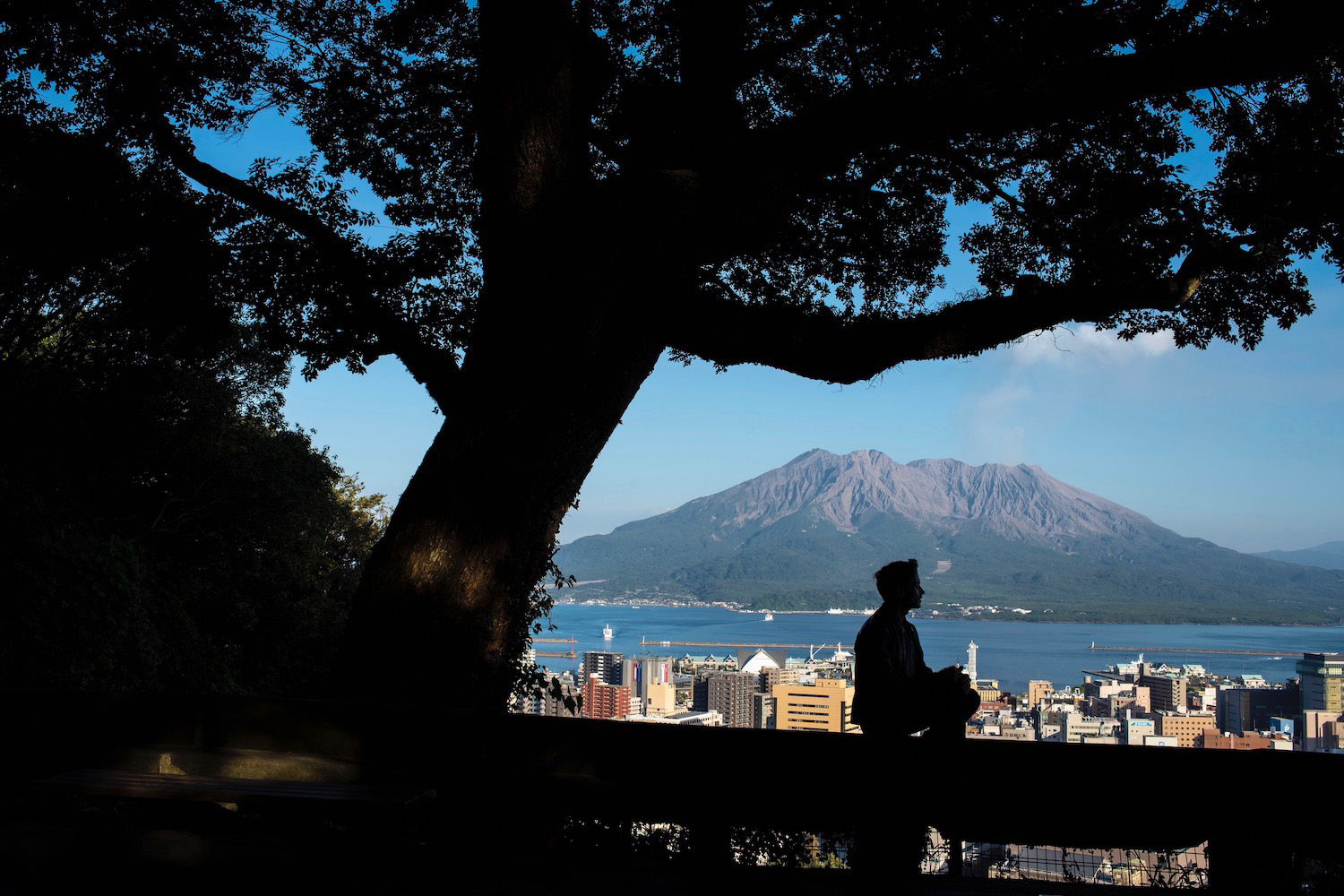
I wasn’t technically going to be watching sunset from Shiroyama Observatory, which faces precisely the wrong direction for it, though I was hoping the substantial smoke and ash pouring from Sakurajima’s crater would take on some color in the end-of-day light. Unfortunately, at least for my photographic aspirations, that’s exactly what happened.
Thing is, something—someone—else also happened. Dressed in running clothes but so cut I could see his eight pack under them, the fit young man was notable not only for his cute face and wandering eyes, but for the Pikachu plush atop his backpack, which is how I cross-referenced his profile on Japan’s answer to Grindr, thereby making sure he played for my team and saving myself from the most abject humiliation.

Upon saying hello in person, I realized the handsome Hong Konger would need to take a Shinkansen back to Hakata just after 10 pm, in addition to the fact that he still had a pretty sizable list of things to do in Kagoshima. So we made our way down the mountain, right as the the ash from Sakurajima started taking on that pinkish-purple color all the best sunsets have. The sky was pitch-dark by the time we saw it again.
Flash Fuchsia
As our night together progressed, first at Kagoshima’s much more impressive answer to Fukuoka’s Yatai food stalls, and then at his friend’s tachinomiya standing-room only bar (which was also named Tachinomiya, I assume ironically), my mind returned to the concept of borrowed scenery. This man was attractive, no doubt; eating and drinking with him on my arm on a Friday evening was way sexier than anything I could’ve done alone, even if I’d gotten a prize-winning shot of Sakurajima.
Yet I couldn’t help but wonder: Would I have felt so satisfied by our post-coital escapades (let alone, the sex itself) had the evening not unfurled as organically as a plume of volcanic dust? Would he? Did he?
It didn’t matter, of course, because as is the case in Vegas (and in Hanoi, at least according to he-who-shall-never-be-named), the most important of all the things to do in Kagoshima is to let what happens here stay here. Amid the borrowed scenery and outposts of Edo; amid the expectation-shattering food stalls and eruptions that are NBD, except for when they flash fuchsia at the precise moment you stop looking.
Other FAQ About Visiting Kagoshima
What is Kagoshima known for?
Kagoshima is known for its proximity to Sakurajima volcano, as well as for the Tenmonkan historic district at its center. It’s also known for Sengan-en garden, which offers a stunning view of Sakurajima and dates back to the time of the Satsuma Domain, which was the Tokugawa Shogun’s eyes and ears in Kyushu.
How do you get around Kagoshima?
Much of Kagoshima city is walkable, particularly if you’re staying in or near Tenmonkan. From here, you can walk to Shiroyama Observatory, to Kagoshima-Chuo station and even to the Sakurajima ferry terminal. The only place you really need a bus to access is Sengan-en, which is quite a ways east of Kagoshima’s historic center.
What does Kagoshima mean in Japanese?
Kagoshima literally means “deer child island” or “doe island” in Japanese. This is interesting to me for a couple of reasons. First, because I’ve never seen a deer anyway in Kagoshima prefecture; and secondly, because like Hiroshima (“wide island”), Kagoshima is not an island.



